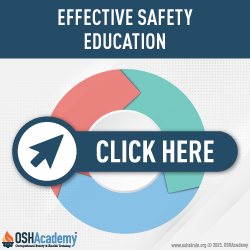Providing Safety Training
Introduction
In this module, we discuss supervisor responsibilities to provide safety instruction, training, evaluation, and certification.
The primary goal of safety education, training, and experience is to increase knowledge, skills, and abilities (KSAs). Education has an important effect on employee safety attitudes, behaviors, and performance.
Safety instruction plays a crucial role in helping employees understand the importance of safety. It achieves this by emphasizing the natural and systemic consequences of behaviors and performance—a concept often referred to as "tying safety training to accountability" among safety educators. But what exactly are these natural and systemic consequences?
- Natural consequences explain how employees will physically suffer if they fail to comply with safe behaviors. For example: Not using a safety harness could lead to fatal consequences in the event of a fall.
- System consequences explain how employee behaviors will result in discipline and recognition/reward for their behaviors. For example: Neglecting to use a safety harness may result in disciplinary action, whereas consistent use of the harness could lead to recognition or rewards.
Training, on the other hand, primarily tells learners how to perform specific tasks. It equips employees with the necessary knowledge and, through hands-on practice, develops the skills required to effectively carry out safe work procedures.
Knowledge Check Choose the best answer for the question.
4-1. Bob suffers a lot of pain when he accidentally strikes his thumb with a hammer. What kind of consequence does Bob experience?
You forgot to answer the question!

